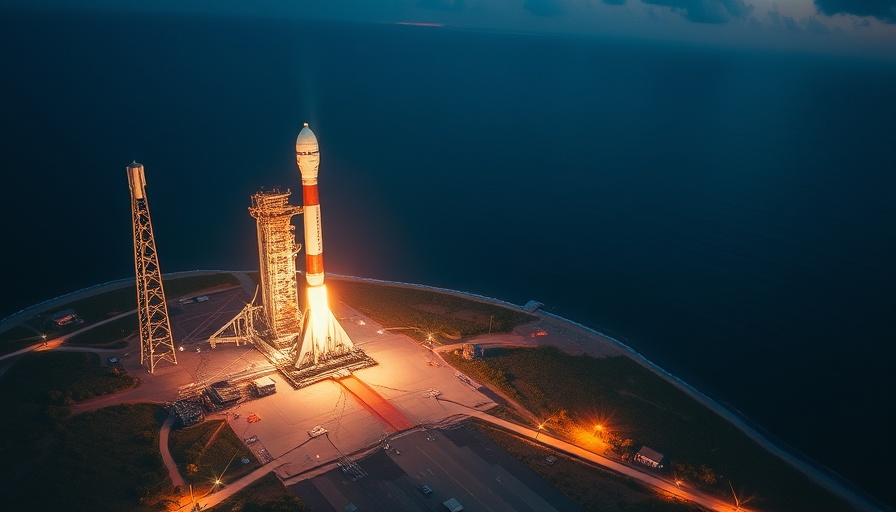
The Excitement Builds: SpaceX's Giant Leap Forward
SpaceX has officially moved its Super Heavy booster to the launch pad at Starbase, Texas, signaling another milestone in the ongoing development of Starship. This marks the approach to what is anticipated to be an electrifying launch on Sunday, August 24, 2025, where SpaceX aims to achieve significant advancements in its ambitious mission to ferry humanity to the moon and eventually Mars.
What’s at Stake with Starship Flight 10?
With the Super Heavy booster now secured atop the orbital launch mount, eyes turn to the upcoming Flight 10—an event laden with expectations following the previous three test flights in 2025 that ended in lost ships. This new venture aims to push the boundaries of space innovation by not only testing enhanced efficiencies but also establishing more robust procedures for recovery, as both the booster and ship are targeted for controlled splashdowns in the Gulf of Mexico and Indian Ocean, respectively.
Experiencing the Power: Starship Design and Engine Performance
One of the defining features of the Super Heavy and Ship is their striking design using stainless steel—a material chosen for its durability and heat resistance. The Starship system boasts an impressive 33 Raptor engines on Super Heavy, with six additional engines on the Ship stage. These next-gen engines are pivotal to fostering reusable space travel capabilities.
Moreover, the close-up photos recently shared by SpaceX showcase these engines, creating excitement not just for launch enthusiasts but also for those interested in the engineering aspects of space vehicles. The detailed imagery has served to heighten interest among potential investors and space advocates alike, reflecting a growing public intrigue surrounding space exploration.
The Role of Public Engagement in Space Missions
In an age where community involvement is more critical than ever, SpaceX’s transparent approach—sharing live updates and behind-the-scenes insights—fosters a broader interest in space activities. This level of engagement not only builds hype around the launch but also educates the public about the intricate processes involved in space travel. Such initiatives are vital for inspiring future generations of scientists and engineers.
Innovation vs. Challenges: The Road Ahead
While the excitement revolving around the Super Heavy booster and Starship is palpable, the challenges preceding Flight 10 are notable. Previous test flights faced significant setbacks, with each failure prompting rigorous analysis and reevaluation of strategies. However, these challenges also ignite innovation. Lessons learned lead to refinements, and each setback paves the way for breakthrough advancements in technology and process design.
Future Predictions: What’s Next for Space Exploration?
Looking beyond Flight 10, the implications of a successful launch are boundless. Continued success of Starship could revolutionize humanity’s presence in space, enabling routine missions not just for exploration but potential colonization efforts. Moreover, successful recoveries could lower costs dramatically, making space more accessible.
As we anticipate the countdown for Flight 10, one thing is certain: SpaceX is steadfast in its mission to transform the future of space and innovation.
 Add Row
Add Row  Add
Add 




Write A Comment